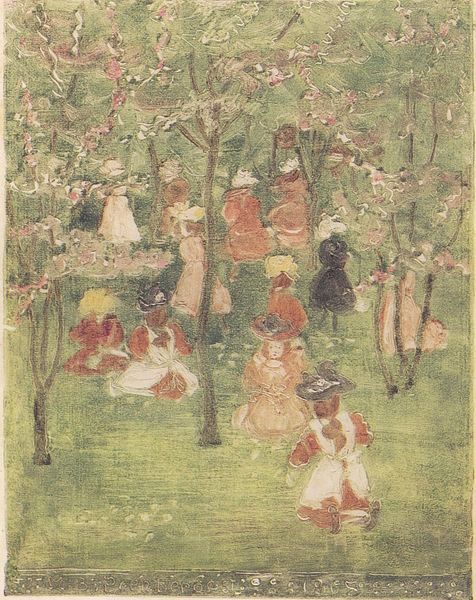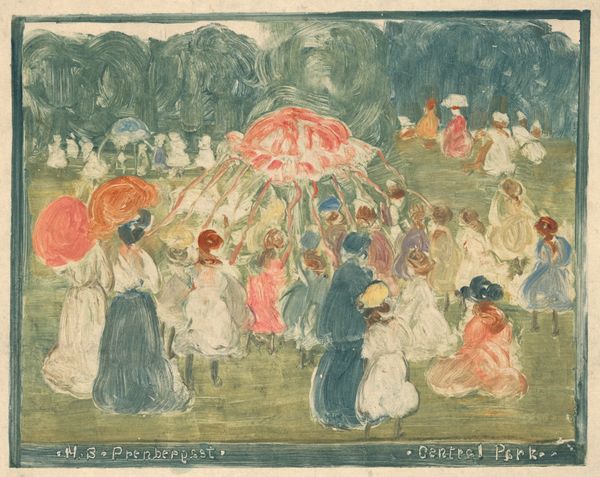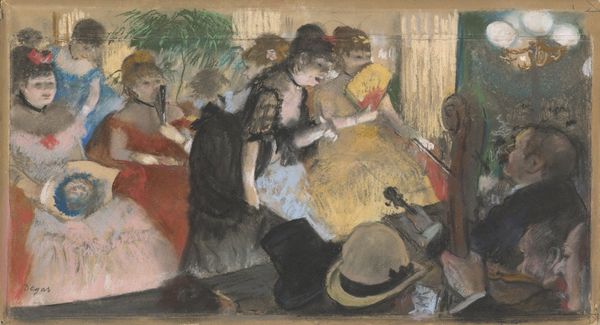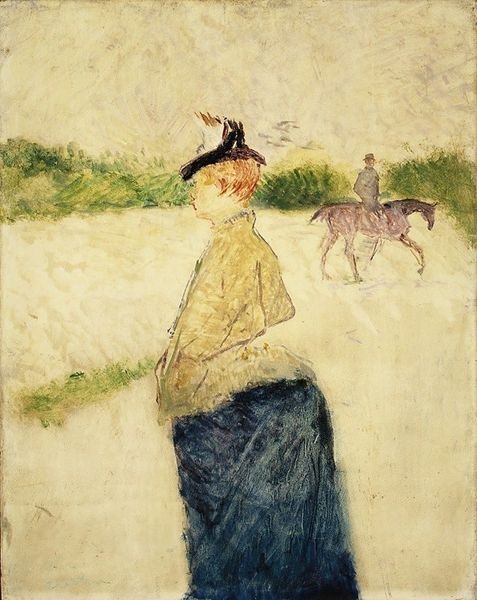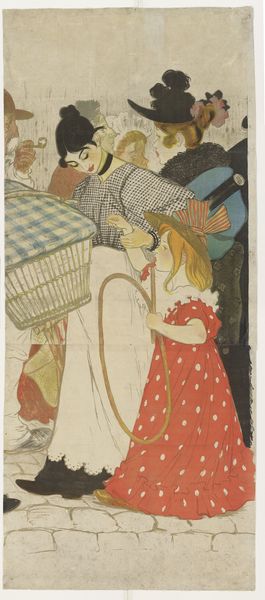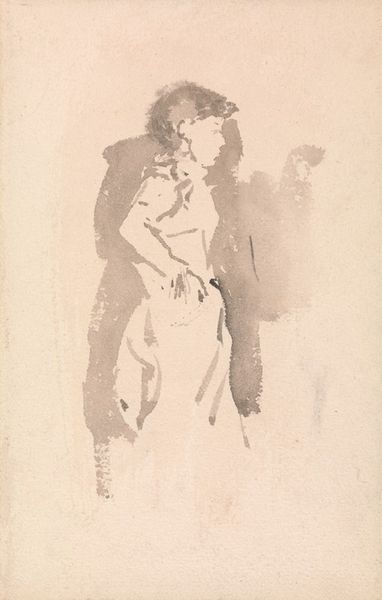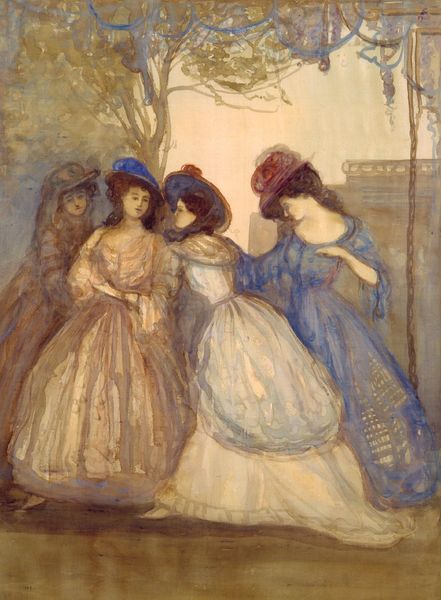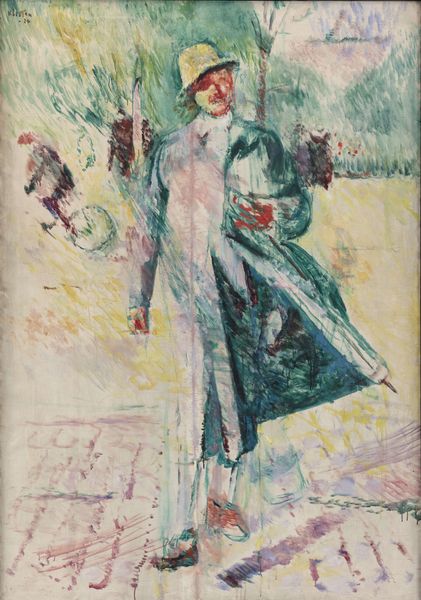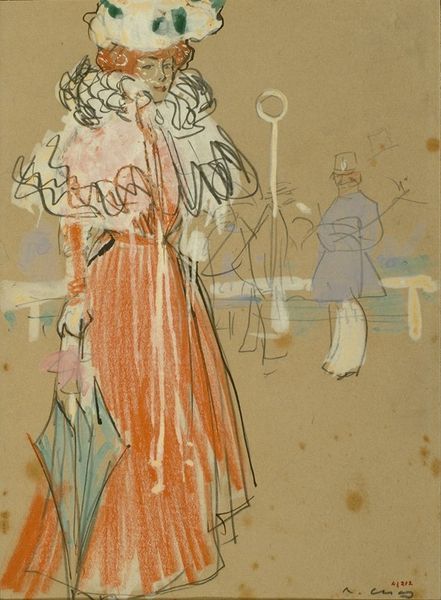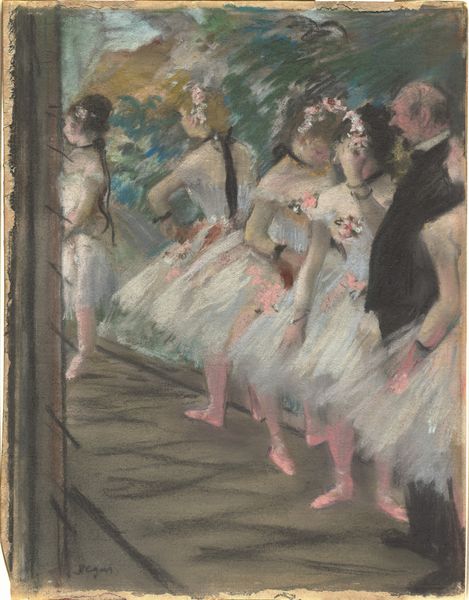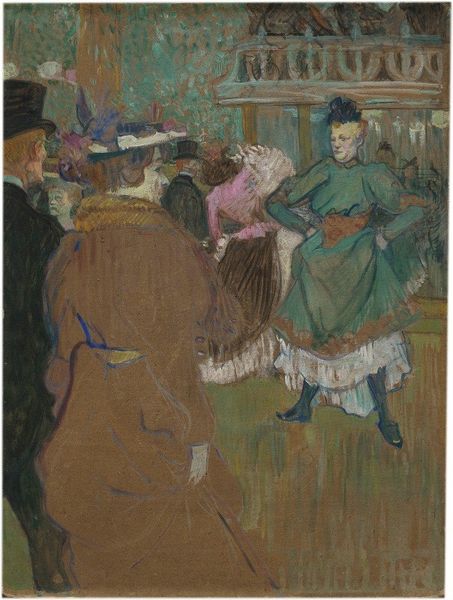
Copyright: Public domain
Curator: Looking at Maurice Prendergast's "The Breezy Common," created in 1897, it's watercolor and, appears to be, colored pencil on paper, portraying a genre-painting scene. It evokes a rather dreamy atmosphere. What stands out to you? Editor: The casual technique intrigues me. How does his approach to these materials comment on societal values? Curator: Prendergast's loose application of watercolor challenges the traditional hierarchy of art forms. The spontaneity aligns with Impressionism, capturing a fleeting moment. However, the medium itself is crucial. Watercolor, often associated with amateur art, is elevated here, questioning what constitutes 'high art' versus 'craft'. It makes me wonder about the intended audience and the economic implications of using less 'valuable' materials. Is this democratizing art, making it accessible both in production and consumption? Editor: I see what you mean. The use of watercolor is interesting, considering the era. It's almost as if he's commenting on leisure itself, presenting it as light, almost impermanent. But who *is* Prendergast creating *for*? Curator: Precisely! Think about the production of leisure. The dresses the women wear, the act of strolling – all require a certain level of economic stability and available leisure time. By portraying this scene with accessible materials and a more informal technique, is he critiquing or celebrating the emerging leisure class? Also, how does the market value assigned to watercolor impact the artist's status and the perception of the subject matter? He’s engaging with modern life, representing the everyday through processes tied to the everyday. Editor: So it's less about what's *depicted* and more about *how* it's depicted. Interesting, seeing art from that angle gives me something new to consider! Curator: Indeed. Analyzing art through its materials and methods can reveal fascinating social and economic commentary. Examining art from a Materialist viewpoint provides crucial insight.
Comments
No comments
Be the first to comment and join the conversation on the ultimate creative platform.
